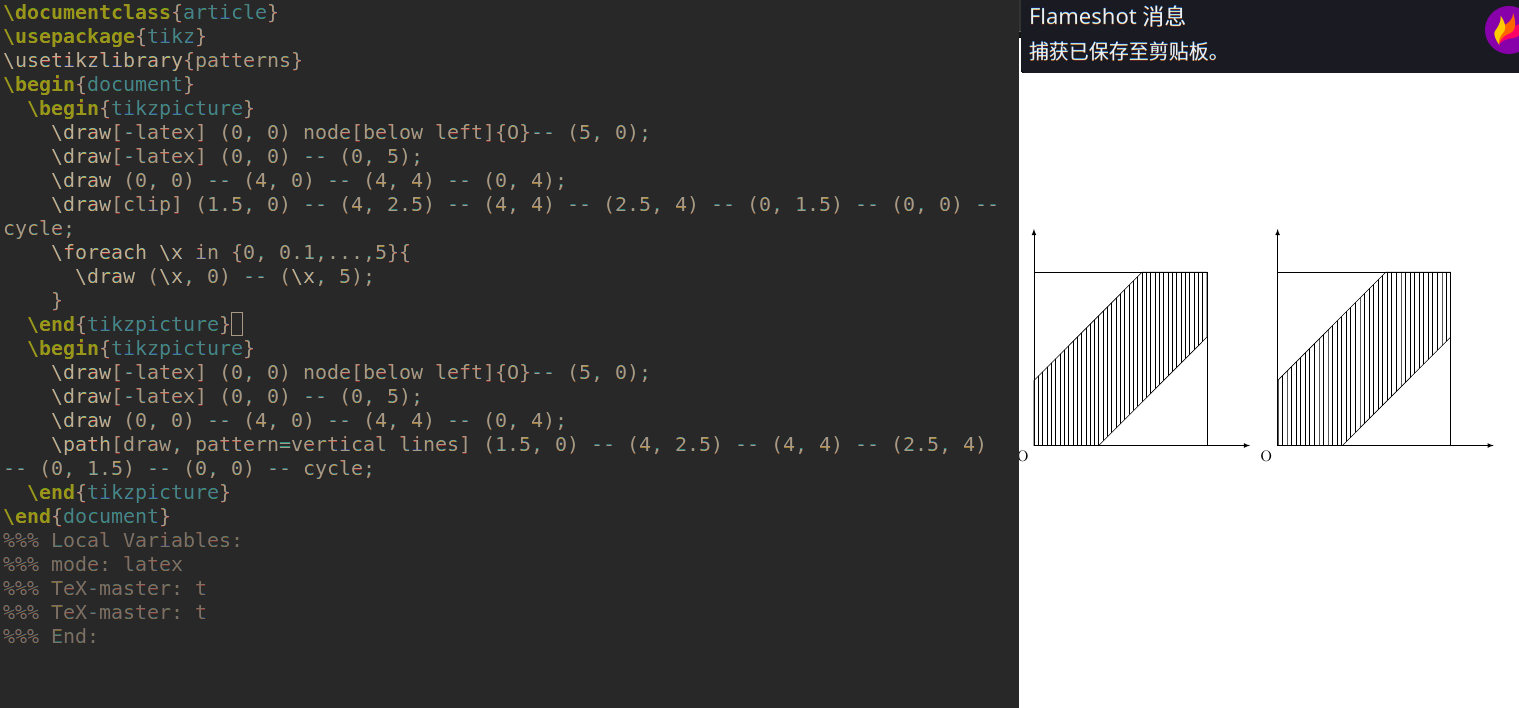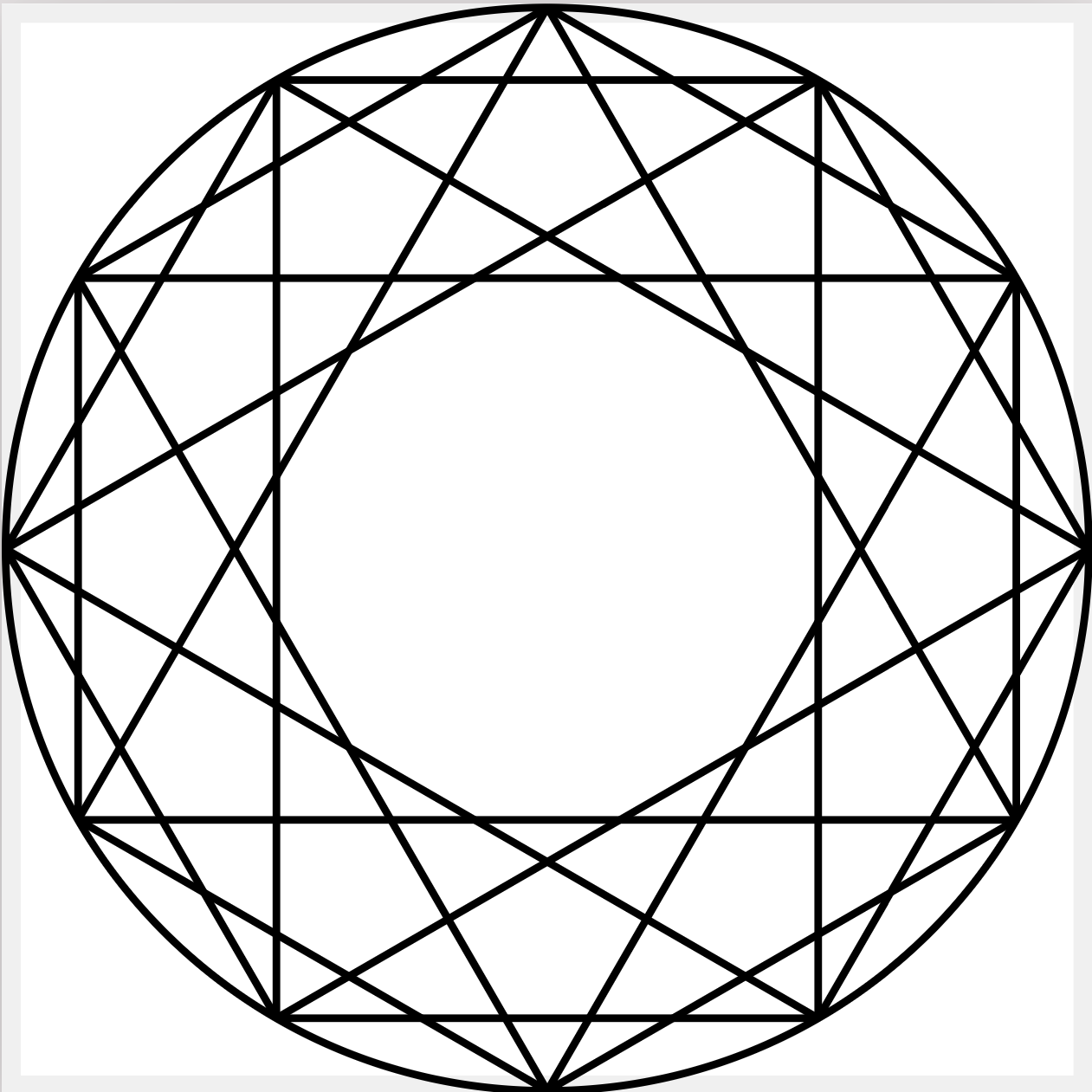1 个回答
:
2021-10-03
这家伙很懒,什么也没写!
理解了clip的作用,就写出来了,应该是clip+foreach而不是foreach+clip
\documentclass{article}
\usepackage{tikz}
\usetikzlibrary{patterns}
\begin{document}
\begin{tikzpicture}
\draw[-latex] (0, 0) node[below left]{O}-- (5, 0);
\draw[-latex] (0, 0) -- (0, 5);
\draw (0, 0) -- (4, 0) -- (4, 4) -- (0, 4);
\draw[clip] (1.5, 0) -- (4, 2.5) -- (4, 4) -- (2.5, 4) -- (0, 1.5) -- (0, 0) -- cycle;
\foreach \x in {0, 0.1,...,5}{
\draw (\x, 0) -- (\x, 5);
}
\end{tikzpicture}
\begin{tikzpicture}
\draw[-latex] (0, 0) node[below left]{O}-- (5, 0);
\draw[-latex] (0, 0) -- (0, 5);
\draw (0, 0) -- (4, 0) -- (4, 4) -- (0, 4);
\path[draw, pattern=vertical lines] (1.5, 0) -- (4, 2.5) -- (4, 4) -- (2.5, 4) -- (0, 1.5) -- (0, 0) -- cycle;
\end{tikzpicture}
\end{document}
%%% Local Variables:
%%% mode: latex
%%% TeX-master: t
%%% End:
结果如下
撰写答案
请登录后再发布答案,点击登录
相关问题
热门文章
热门问题
5
热门标签
等待解答
推荐专家
470个答案 166次被采纳
15个答案 0次被采纳
93个答案 41次被采纳
123个答案 71次被采纳
11个答案 5次被采纳





